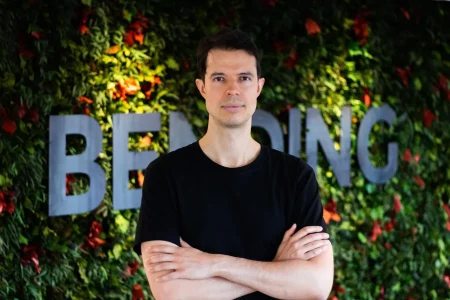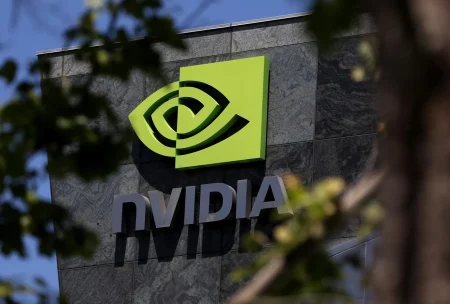Ripple’s Transformation: From Crypto Pioneer to Financial Conglomerate
In a remarkable evolution within the cryptocurrency landscape, Ripple, the company behind the world’s fourth-largest cryptocurrency XRP, has successfully reinvented itself as a formidable financial conglomerate. Recently securing $500 million in funding at a staggering $40 billion valuation, Ripple has attracted investments from some of Wall Street’s most discerning firms, including Fortress Investment Group and Citadel Securities, alongside notable crypto investors such as Pantera Capital, Galaxy Digital, Brevan Howard, and Marshall Wace. This latest investment round follows a previous $1 billion tender offer at the same valuation, reflecting growing institutional confidence in Ripple’s expanding business model and strategic direction. The company frames this capital raise as a deliberate move to deepen relationships with financial partners whose expertise complements their growing suite of global products, rather than a necessary fundraising effort.
The influx of capital has dramatically boosted the fortunes of Ripple’s leadership, propelling co-founder Chris Larsen’s net worth to an estimated $13.8 billion, up from $10.2 billion. CEO Brad Garlinghouse has likewise joined the billionaire ranks with an estimated fortune of $3.5 billion, derived from his 6% stake in the company and personal XRP holdings. Arthur Britto, one of the original creators of the XRP Ledger, has also achieved billionaire status with approximately 1.3 billion XRP tokens valued at roughly $3 billion. What makes this funding round particularly interesting is that Ripple didn’t actually need the additional capital from a financial perspective. The company already controls about 35 billion XRP tokens—worth approximately $80 billion at recent prices—which are released from escrow monthly, providing Ripple with one of the most advantageous self-funding mechanisms in the business world. This massive token reserve, representing more than 30% of XRP’s total supply, has given the company extraordinary financial flexibility.
Ripple’s journey hasn’t been without significant challenges. The company originally positioned XRP as a revolutionary “bridge currency” designed to replace the SWIFT international payment system and streamline cross-border transactions. Despite securing high-profile partnerships, including one with MoneyGram in 2019, Ripple struggled to translate media attention into sustainable adoption and usage. The situation grew more complicated in 2020 when the U.S. Securities and Exchange Commission filed a lawsuit against Ripple, alleging that its sales of XRP constituted unregistered securities offerings. This legal battle lasted five years before finally concluding in August with a $125 million settlement. Despite these setbacks, Ripple maintained a loyal fan base that continued to support XRP’s valuation, even as the project was criticized for its limited adoption relative to its market capitalization, at one point earning a spot on Forbes’ list of “zombie blockchains.”
Rather than retreating in the face of regulatory challenges, Ripple embarked on an ambitious expansion strategy through strategic acquisitions. Over the past two years, the company has executed one of the cryptocurrency industry’s most aggressive acquisition campaigns, spending billions to diversify its business model. These purchases include GTreasury, a treasury management software provider, acquired for $1 billion; prime broker Hidden Road for $1.25 billion; stablecoin infrastructure platform Rail for $200 million; and custody firms Metaco and Standard Custody for $250 million and an undisclosed amount, respectively. Through these acquisitions, Ripple has transformed from a company primarily focused on cryptocurrency-based payment solutions to a diversified financial services conglomerate with significant operations across various aspects of traditional and digital finance. This strategic pivot represents a fascinating case study in how a cryptocurrency company can adapt and evolve in response to market challenges and regulatory obstacles.
The company’s aggressive expansion strategy appears to be bearing fruit. Ripple reports that its payment volumes have now surpassed $95 billion, demonstrating substantial transaction activity across its various platforms. Additionally, RLUSD, Ripple’s stablecoin launched in December, recently crossed the significant milestone of $1 billion in market capitalization. The stablecoin is already being utilized as collateral on Ripple Prime—the rebranded Hidden Road business—which was processing approximately $3 trillion annually across 300 institutional clients before its acquisition by Ripple. The brokerage arm is also expanding its services to include collateralized lending for XRP, further integrating the token into Ripple’s growing financial ecosystem. These developments suggest that Ripple is successfully executing on its vision to create a comprehensive suite of financial services that bridge traditional finance and the cryptocurrency sector.
In the volatile and often unpredictable cryptocurrency industry, Ripple’s story demonstrates that survival and adaptation can ultimately prove to be the most successful strategies. Thanks to its devoted community of supporters who continue to maintain XRP’s substantial market valuation, the company that once promised to revolutionize global payments has instead charted a different course, acquiring significant financial infrastructure along the way. While questions remain about whether Ripple’s diverse collection of businesses truly justifies the combined $179 billion valuation currently attributed to the company and its token, the firm’s transformation represents one of the most fascinating pivots in the cryptocurrency industry. By leveraging its substantial resources to acquire established businesses in adjacent financial sectors, Ripple has positioned itself not merely as a cryptocurrency project but as a legitimate financial conglomerate with diversified revenue streams and institutional backing. As traditional finance and cryptocurrency markets continue to converge, Ripple’s evolution may serve as a template for how crypto-native companies can achieve longevity and relevance beyond the boom-and-bust cycles that characterize much of the digital asset landscape.















